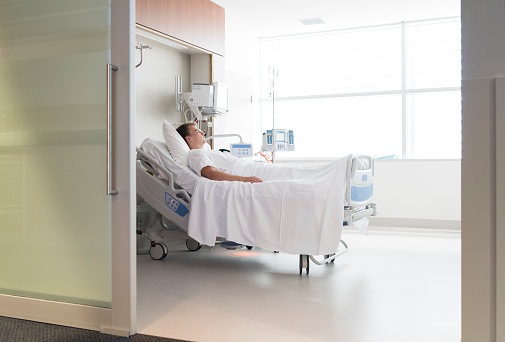
The results of a new study published in JAMA Internal Medicine suggest that single-patient hospital rooms are more conducive for preventing multidrug-resistant organism transmission and health care related-infections.
In this time-series analysis study, and the largest hospital move in Canadian history, researchers compared the rates of institution-level rates of new multidrug-resistant organism colonization and health care–associated infections both before and after the move from a 417-room hospital comprised of ward-type rooms to a 350-bed facility with 100% single-patient rooms. Upon admission and weekly thereafter, all medical, surgical, and critical care inpatients were screened for methicillin-resistant Staphylococcus aureus (MRSA) and vancomycin-resistant Enterococcus (VRE) on admission utilizing standard laboratory techniques.
Patients identified as having MRSA or VRE colonization were placed in contact isolation for the duration of hospitalization. In the old hospital, patients with the same organism could be placed in multibed rooms. Regular hospital disinfectant was used for daily and discharge MRSA and VRE room cleanings, with VRE requiring a double cleaning on discharge. On diagnosis, patients with CDI were placed in contact isolation and moved to single rooms with soap and water handwashing. The rooms received daily and discharge cleaning with bleach-based products. The main endpoints of this study were stipulated as the rates of VRE and MRSA infection, as well as Clostridioides difficile (formerly known as Clostridium difficile) infection (CDI) per 10,000 patient-days.
A ‘Notable’ Difference Observed
According to the results of the study, juxtaposed with the 27 months before the move, during the 36 months after the hospital move, the researchers observed an immediate and sustained reduction in nosocomial VRE colonization (from 766 to 209 colonization’s; incidence rate ratio IRR=0.25; 95% CI, 0.19 to 0.34 and MRSA colonization from 129 to 112 colonization’s; IRR=0.57; 95% CI, 0.33 to 0.96 was noted, as well as VRE infection from 55 to 14 infections; IRR=0.30, 95% CI, 0.12 to 0.75). Moreover, the results showed that rates of CDI (from 236 to 223 infections; IRR, 0.95; 95% CI, 0.51-1.76) and MRSA infection (from 27 to 37 infections; IRR, 0.89, 95% CI, 0.34-2.29) did not decrease.
@JAMAInternalMed “Time-Series Analysis of Health Care–Associated Infections in a New Hospital With All Private Rooms”
Single rooms = ⬇️ VRE infx/MRSA colonization but no difference in MRSA/Cdiff infxhttps://t.co/CrjACBZxh3
— Alex Sundermann, DrPH (@SundermannAJ) August 23, 2019
“After the Royal Victoria Hospital moved to a new facility with exclusively single-patient rooms, we observed a notable and sustained decrease in the rates of new MRSA and VRE colonization and VRE infection, but not of CDI or MRSA infection,” the study authors wrote in their conclusion.
They added that this study “adds observational evidence that could support the recommendations to build single-bed facilities to decrease the transmission of specific multidrug-resistant organisms and health care–associated infections and may have implications for infection control strategies for planned renovation or construction of new inpatient units and hospitals.”
Hospitalization in exclusively single-patient rooms appeared to be associated with a sustained decrease in the rates of new MRSA and VRE colonization and VRE infection | JAMA Internal Medicine 2019 https://t.co/7uuJfo6VmE
— Lina Ruiz (@linaruizmd) August 22, 2019
Time-Series Analysis of Health Care–Associated Infections in a New Hospital With All Private Rooms https://t.co/AvDIWwg9wJ
— Today's Hospitalist (@TodaysHospital) August 20, 2019







 © 2025 Mashup Media, LLC, a Formedics Property. All Rights Reserved.
© 2025 Mashup Media, LLC, a Formedics Property. All Rights Reserved.